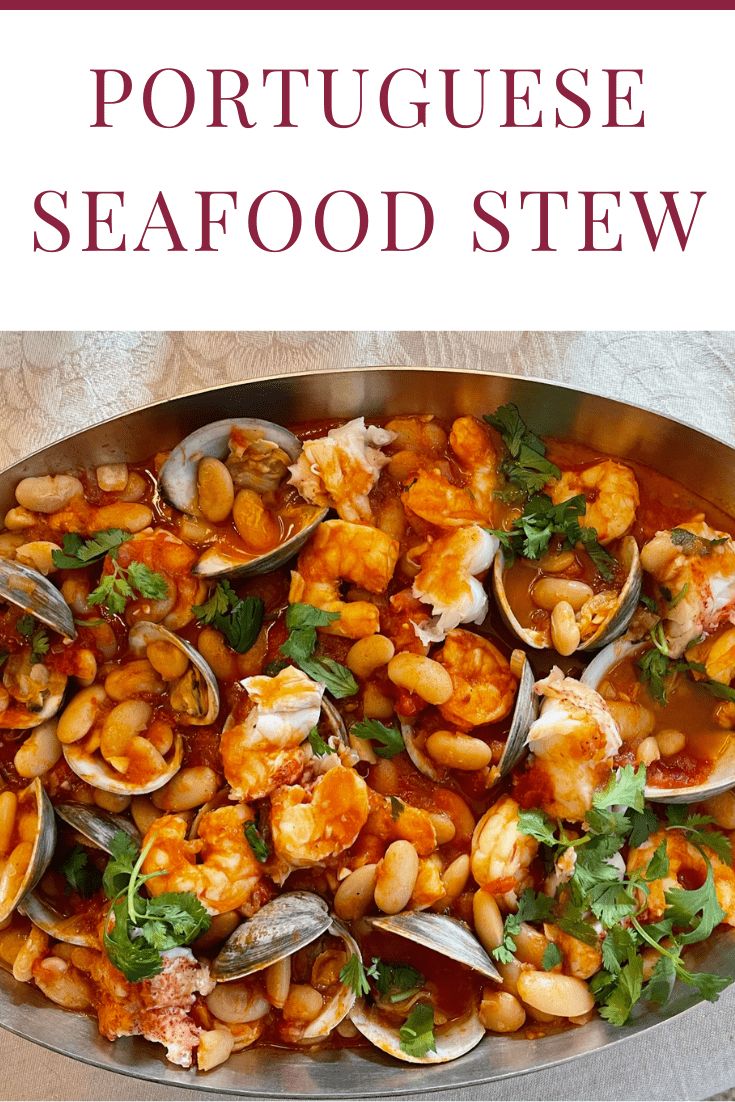-
The Fish Foundation: Tradition calls for a mix of firm white fish (like hake (pescada), monkfish (tamboril), or grouper (cherne)) and oily, flavorful fish (like sea bass (robalo) or fresh tuna (atum)). This combination ensures the broth is rich and the fish pieces remain intact during cooking.
-
The Shellfish Boost: While not always included, adding prawns, clams, or mussels elevates the stew, contributing their briny liquor to the broth.
-
The Holy Trinity: Onions, tomatoes, and green bell peppers form the aromatic base (refogado) that is the foundation of countless Portuguese dishes.
-
The Hearty Element: Potatoes are non-negotiable. They are sliced and layered to thicken the stew and make it a complete, satisfying meal.
-
The Soulful Seasonings:
-
Paprika (colorau) provides depth and a subtle smokiness.
-
Bay leaves (folhas de louro) and fresh parsley (salsa) or coriander (coentros) offer their distinctive herbal notes.
-
A good glug of dry white wine and a final drizzle of extra virgin olive oil are the essential finishing touches that define its character.
-
The Art of Layering: A Recipe Steeped in Tradition
What sets Caldeirada apart is its specific preparation method. It is not merely thrown together; it is carefully constructed in layers, much like a French bouillabaisse or a Catalan suquet.
-
The Flavor Base (Refogado): The journey begins by slowly sautéing onions, peppers, and garlic in olive oil until sweet and soft. Tomatoes and paprika are added to create a rich, flavorful sauce.
-
The Strategic Build: In a large, heavy pot, ingredients are layered. A bed of potato slices is placed at the bottom to prevent the fish from sticking and to absorb all the glorious flavors. Alternating layers of fish, shellfish, and more potatoes follow.
-
The Gentle Simmer: White wine and water (or a light fish stock) are added, and the pot is brought to a simmer. It is then covered and left to cook gently—never boiled aggressively—allowing the fish to steam and poach to perfection and the potatoes to become tender.
-
The Final Touch: The stew is finished with a lavish sprinkle of fresh herbs and a generous swirl of high-quality olive oil just before serving. This last-minute addition is critical, lending a fruity, peppery aroma that ties the entire dish together.
-
The Fish Foundation: Tradition calls for a mix of firm white fish (like hake (pescada), monkfish (tamboril), or grouper (cherne)) and oily, flavorful fish (like sea bass (robalo) or fresh tuna (atum)). This combination ensures the broth is rich and the fish pieces remain intact during cooking.
-
The Shellfish Boost: While not always included, adding prawns, clams, or mussels elevates the stew, contributing their briny liquor to the broth.
-
The Holy Trinity: Onions, tomatoes, and green bell peppers form the aromatic base (refogado) that is the foundation of countless Portuguese dishes.
-
The Hearty Element: Potatoes are non-negotiable. They are sliced and layered to thicken the stew and make it a complete, satisfying meal.
-
The Soulful Seasonings:
-
Paprika (colorau) provides depth and a subtle smokiness.
-
Bay leaves (folhas de louro) and fresh parsley (salsa) or coriander (coentros) offer their distinctive herbal notes.
-
A good glug of dry white wine and a final drizzle of extra virgin olive oil are the essential finishing touches that define its character.
-
The Art of Layering: A Recipe Steeped in Tradition
What sets Caldeirada apart is its specific preparation method. It is not merely thrown together; it is carefully constructed in layers, much like a French bouillabaisse or a Catalan suquet.
-
The Flavor Base (Refogado): The journey begins by slowly sautéing onions, peppers, and garlic in olive oil until sweet and soft. Tomatoes and paprika are added to create a rich, flavorful sauce.
-
The Strategic Build: In a large, heavy pot, ingredients are layered. A bed of potato slices is placed at the bottom to prevent the fish from sticking and to absorb all the glorious flavors. Alternating layers of fish, shellfish, and more potatoes follow.
-
The Gentle Simmer: White wine and water (or a light fish stock) are added, and the pot is brought to a simmer. It is then covered and left to cook gently—never boiled aggressively—allowing the fish to steam and poach to perfection and the potatoes to become tender.
-
The Final Touch: The stew is finished with a lavish sprinkle of fresh herbs and a generous swirl of high-quality olive oil just before serving. This last-minute addition is critical, lending a fruity, peppery aroma that ties the entire dish together.

